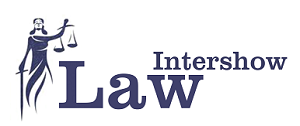The laws governing negligence and rear-end collisions in Nevada are found in NRS 484B.127. Specific guidelines on how closely one vehicle can follow another on the road are provided by this legislative statute. In most cases, drivers that follow too closely and cause end-to-end crashes are held accountable and held responsible for any damage. It causes all different sorts of injuries, including whiplash, neck, and brain injury, etc.
These accidents can be a major problem due to traffic, sightseers who aren’t paying attention to the road, and unpredictable drivers. Victims may be entitled to financial recompense for their physical harm, emotional distress, and other losses. Personal injury claims are made in these situations. Ensure you have the proof you require to uphold your rights and interests.
For many years, the Justice Law Centre has fought to uphold the rights of the people of Ely, Nevada. Their personal injury attorneys are aware of this and will make every effort to make the entire procedure as easy as possible for you and your loved ones. This Ely Nevada law firm will negotiate with the insurance companies to ensure that you receive payment for your medical expenses as well as compensation for your pain and suffering, lost wages, and the anxiety and worry the accident has caused your family.
How To Determine Whose Fault Is It
Front Driver
It’s a misconception that a rear-end crash in Nevada always is because of the rear. In many instances, the front driver can be blamed for the collision. Rear-end collisions can be caused by front drivers who don’t signal, accidentally apply the brakes instead of the accelerator, accidentally put the car in reverse instead of driving, or have broken tail and bumper lights.
Rear Driver
In all the following instances, the driver who is causing the obstruction is typically at fault. Nevada law disclaims that you are still liable for a rear-end collision only because you were the negligent driver. Generally, the rear driver is typically at fault because tailgating is such a prevalent occurrence on Nevada roadways.
Tailgating, which is defined as following a superior vehicle too closely, is a violation of NRS 484B.127. Along with speeding, being distracted while driving (texting and talking on a mobile phone), displaying road rage, and being intoxicated while driving are other frequent scenarios in which a motorist is accountable for a crash at the hinder end.
Third-Party
Sometimes, both parties can share some of the guilt, and a third party is also held responsible. These third parties may be named as defendants in a specific injury lawsuit even though they weren’t there at the time of the collision. In situations like manufacturing defects of the vehicle and failure to recall vehicles owing to defects, or roads traveled on were not properly maintained, third parties can be held liable.
Injured victims who were unfairly hurt in an automobile accident are entitled to compensation. It’s crucial to understand your legal rights, and only a knowledgeable personal injury lawyer can respond to your specific inquiries about claims, insurance, and lawsuits.
